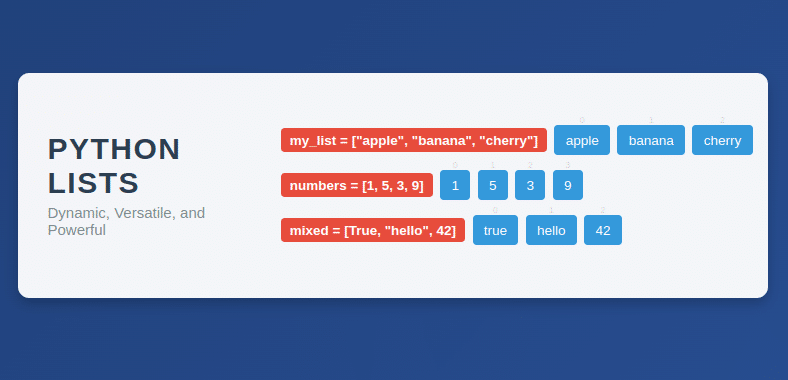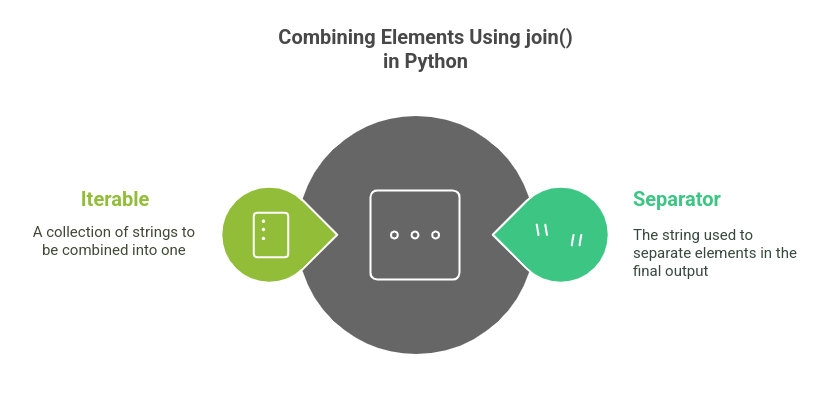The Hypertext Preprocessor, commonly known as PHP, is an open-source language generally used for web development purposes. It is a widely-used language that is executed on the server side and can be embedded within HTML code or used standalone.
There is no doubt to the fact that PHP has been growing at a rapid pace. The demand for skilled PHP developers has been on the rise and does not show any signs of slowing down. But, just like with any other language, PHP learning remains incomplete without experience in practical projects. To gain a strong understanding of PHP, a hands-on experience in practical projects can go a long way. These projects would require you to build various web-based platforms such as web applications, websites, or web services. You would need to incorporate frameworks, libraries, and other web technologies to create an interactive and reliable online experience.
There are several benefits to working on PHP projects, some of which are:
- Ease of Learning: PHP has a simple and intuitive syntax, making it easy to learn.
- Strong Community Support: It has a large community of developers who provide support and resources.
- Cost-Effectiveness: PHP is an open-source language with free frameworks and tools, reducing project costs.
- Versatility: PHP can be used for various web projects, from simple websites to complex applications.
- Rapid Development: It offers a fast development cycle, enabling quick deployment of web applications.
- Performance: PHP has improved execution speed, ensuring efficient handling of high-traffic loads.
- Scalability: PHP supports modular development and integration with frameworks for scalable applications.
- Job Opportunities: There are several employers looking for skilled PHP developers creating a lucrative job market
Here, we have compiled a list of some great PHP projects that you can work on to gain practical experience and boost your resume. We will explore how PHP can be used to create different platforms, such as content management systems (CMS), e-commerce websites, forums, online learning management systems (OLMS), etc.
Content Management System (CMS)
A content management system (CMS) is a software application that enables users to create, manage, and publish digital content on the web without technical expertise. It provides a user-friendly interface for content creation, editing, and organization, allowing users to easily maintain and update their websites.
When developing a customizable CMS for managing website content using PHP, you will need to focus on creating a system that allows users like yourself to easily manage and update their website content.
You should aim to build a CMS that can be customized according to your specific website needs. This means designing a modular architecture that allows flexibility in content types, templates, and layouts. One should be able to create and edit various content elements such as pages, blog posts, images, and more.
The next step would be to create an admin dashboard that is user-friendly and easy to navigate. This dashboard should provide a clear and intuitive interface where you can efficiently manage your website content. Look for features that enable content creation, editing, organization, and publishing. It should be visually appealing, and responsive, and provide clear instructions for seamless content management.
Finally, to enhance your CMS’s functionality and security, you can implement user roles and permissions. This will allow you to assign different levels of access and control to users based on their responsibilities. Additionally, consider incorporating a plugin system that enables you to extend your CMS’s capabilities. Plugins can also provide additional features such as SEO optimization, social media integration, analytics, etc.
E-commerce Website
When building a fully functional e-commerce website using PHP, you will focus on creating a website that allows you to sell products online. Here are the key aspects to consider:
Start by designing an attractive and user-friendly website interface that showcases your products effectively. Consider organizing products into categories and implementing search functionality to help customers find what they’re looking for.
Implement product listings that provide detailed information, images, and pricing. Develop a shopping cart system that allows customers to add products, update quantities, and proceed to checkout. Ensure secure payment integration, such as using SSL certificates and integrating with trusted payment gateways to provide a secure and seamless payment process.
Enhance your website with user authentication functionality, enabling customers to create accounts, log in, and manage their profiles. Implement order management features, including order tracking, order history, and email notifications to keep customers informed about their purchases.
Additionally, consider incorporating features like inventory management, customer reviews and ratings, promotional campaigns, and customer support channels to further enhance the e-commerce experience
Social Networking Platform
Developing a social networking platform with PHP involves creating a platform where users can connect and interact with each other. Here’s what you need to consider:
- Database Design: Design a database schema to store user information, posts, comments, friendships, and other relevant data.
- User Registration and Authentication: Implement user registration and login functionality using PHP. Securely store user passwords by hashing them.
- User Profiles: Build user profile pages where users can add personal information, Profile pictures, and customize their profiles.
- Friend Connections: Develop a system that allows users to send friend requests, accept or decline requests, and manage their friend connections.
- User Profiles: Allow users to view and edit their profiles. Display information such as profile pictures, bio, and recent activity.
- Friend Connections: Enable users to connect with each other by sending friend requests and accepting them. Display friends’ lists on user profiles.
- Activity Feeds: Implement an activity feed that displays updates from a user’s friends, such as new posts, comments, and friend requests.
- Status Updates: Allow users to post status updates and share them with their friends. Store updates in the database and display them on the user’s profile and activity feed.
- Likes and Comments: Enable users to like and comment on posts made by their friends. Implement functionality to store likes and comments in the database and display them alongside posts.
- Notifications: Implement a notification system that alerts users about friend requests, likes, comments, and other relevant activities.
Remember to consider scalability, security, and privacy aspects while developing the social networking platform. This includes implementing measures to prevent unauthorized access, protecting user data, and ensuring a smooth user experience.
Forum or Discussion Board
Creating an online forum or discussion board using PHP involves building a platform where users can engage in threaded discussions. Here’s what you need to consider:
- Database Design: Design a database schema to store forum categories, threads, posts, user information, and other relevant data.
- User Registration and Authentication: Implement user registration and login functionality using PHP. Store user credentials securely and provide features like password hashing and password recovery.
- Forum Categories and Threads: Create a system to categorize discussions into different forum categories. Allow users to create new threads within these categories and participate in existing threads.
- User Profiles: Develop user profile pages where users can add information about themselves, including profile pictures and personal details.
- Threaded Discussions: Implement a structure that allows users to create new threads and reply to existing threads. Each reply should be linked to its parent thread in a hierarchical manner.
- User Registration and Authentication: Create a user registration system that allows new users to create accounts and authenticate them during login. Ensure security measures are in place to protect user information.
- Moderation: Implement moderation features to allow designated moderators to manage the forum by removing inappropriate content, warning or banning users, and maintaining a positive environment.
- Private Messaging: Enable users to send private messages to each other. Implement a messaging system where users can compose, send, and receive private messages.
- Search Functionality: Implement a search feature that allows users to search for specific threads or posts based on keywords, author names, or other criteria.
Consider implementing features like user roles (such as administrators, moderators, and regular users), notifications for thread updates, and a responsive design for optimal user experience across devices.
Booking and Reservation System
When developing a booking and reservation system for various services using PHP, you will focus on creating a system that allows users like yourself to book and manage appointments or reservations. Here’s what you need to consider:
- Design a database schema to store service information, availability schedules, and user bookings.
- Create a user registration and login system to allow users to create accounts and manage their bookings.
- Implement a user-friendly interface where users can browse available services and select their preferred date and time for booking.
- Develop calendars that display availability for each service provider or resource.
- Implement a mechanism to track and update availability in real time, preventing double bookings.
- Integrate online payment functionality, allowing users to securely make payments for their bookings. Utilize payment gateways such as PayPal or Stripe to handle the payment process.
- Implement notifications to inform users about successful bookings, reminders, or changes in their reservations.
- Create a booking management system where users can view, modify, or cancel their bookings.
- Incorporate cancellation policies that define rules and fees for cancellations, providing clarity to users.
Additionally, consider features like search functionality to allow users to find specific services, personalized user profiles to store booking history, and integration with external calendars or third-party platforms for synchronization.
Remember to prioritize security by implementing measures such as data validation, sanitization, and protection against SQL injection attacks.
Job Board or Recruitment Platform
When building a platform for job seekers and employers to connect using PHP, you will focus on creating a system that facilitates the job search and application process. Here’s what you need to consider:
- Design a database schema to store job listings, employer profiles, applicant information, and other relevant data.
- Create a user registration and login system for both job seekers and employers, allowing them to create accounts and access platform features.
- Develop a job listing system where employers can post job openings with details such as job titles, descriptions, requirements, and application instructions.
- Enable job seekers to search and browse job listings, view job details, and apply to positions of interest.
- Implement applicant tracking functionality to allow employers to manage and track applications received for each job listing.
- Enable job seekers to submit their resumes and other relevant documents during the application process.
- Implement search functionality that allows job seekers to search for jobs based on keywords, location, industry, or other criteria.
- Set up notifications to keep job seekers informed about new job postings, application updates, or interview invitations.
- Create user profiles for job seekers and employers, allowing them to add and manage their personal and professional information, including resumes, job preferences, and contact details.
Consider incorporating additional features like personalized job recommendations, saved job listings, interview scheduling, and employer reviews to enhance the user experience on the platform.
Ensure the security of user data by implementing measures such as input validation, secure storage of passwords, and protection against cross-site scripting (XSS) and SQL injection attacks
Online Learning Management System
An online learning management system (LMS) is a software platform that enables the creation, delivery, and management of online educational courses. It facilitates course organization, user enrollment, progress tracking, communication, assessments, and analytics
Creating an online learning platform using PHP involves building a platform that allows users to access and participate in online courses. Here’s what you need to consider:
- Database Design: Design a database schema to store course information, user data, progress tracking, and other relevant data.
- User Registration and Authentication: Implement user registration and login functionality using PHP. Securely store user credentials and provide features like password hashing and password recovery.
- Course Management: Develop a system that allows course creators or administrators to manage course content, including creating and organizing lessons or modules.
- User Enrollment: Enable users to enroll in courses of their choice. Keep track of enrolled users and their progress within each course.
- Lesson or Module Creation: Provide a user-friendly interface for course creators to add and organize lessons or modules with content such as videos, text, or multimedia.
- Enrollment System: Implement a mechanism that allows users to enroll in courses, view their enrolled courses, and access course materials.
- Progress Tracking: Develop a feature to track and display the progress of enrolled users within each course, showing completed lessons or modules.
- Quizzes and Assignments: Build a system that allows course creators to add quizzes or assignments to assess the learners’ understanding and progress. Provide a way for learners to submit their answers or assignments online.
- Discussion Forums: Create a platform for learners to engage in discussions related to course content. Enable learners to post questions, provide answers, and interact with peers and instructors.
Consider implementing additional features such as course ratings and reviews, certificates upon course completion, and a search function to help users discover relevant courses.
Blogging Platform
Developing a platform for publishing and managing blog posts entails creating a system where users can create, publish, and manage their blog posts. Here’s what you need to consider:
- Database Design: Design a database schema to store blog posts, user information, comments, and other relevant data.
- User Registration: Implement user registration functionality using PHP, allowing users to create accounts to publish and manage their blog posts.
- Blog Post Creation and Publishing: Develop a user-friendly interface that enables users to create and publish blog posts with features like text formatting, image uploads, and categorization.
- Blog Post Management: Implement functionality that allows users to edit, update, or delete their blog posts. Provide a dashboard or interface where users can manage their published content.
- User Registration: Create a user registration system where visitors can create accounts to interact with the blog, leave comments, and share content.
- Commenting: Implement a commenting system that enables users to leave comments on blog posts. Include features like threaded comments, comment moderation, and user notifications.
- Sharing: Integrate social media sharing functionality, allowing users to share blog posts on platforms like Facebook, Twitter, or LinkedIn.
- Categories and Tags: Provide the ability to categorize blog posts into different topics or themes. Implement tags to allow users to add relevant keywords or topics to their blog posts.
- Search Functionality: Develop a search feature that enables users to search for specific blog posts based on keywords, categories, tags, or author names.
- SEO Optimization: Implement SEO best practices, such as creating search engine-friendly URLs, generating meta tags, optimizing page load speed, and using proper heading tags, to enhance the visibility and discoverability of blog posts in search engine results.
Consider implementing additional features like related post suggestions, user profiles with bio and social media links, and email subscription options for readers to receive updates on new blog posts.
Real Estate Listing Website
Building a platform for listing and searching properties using PHP involves creating a website where users can list their properties for sale or rent, and others can search for available properties. Here’s what you need to consider:
- Database Design: Design a database schema to store property information, user data, and other relevant details.
- User Registration and Authentication: Implement user registration and login functionality using PHP, allowing users to create accounts and manage their property listings.
- Property Listing Management: Develop a system that allows users to create, edit, and delete property listings. Include features like property details, pricing, location, and media uploads.
- Property Search: Implement a search functionality that allows users to search for properties based on criteria like location, price range, property type, and other filters.
- Filters: Provide filters that allow users to refine their property search based on specific criteria such as price, location, number of bedrooms, or property features.
- Maps Integration: Integrate maps (such as Google Maps) to display property locations visually. Users can view properties on the map and search within specific areas.
- Contact Forms: Include contact forms on property detail pages, enabling interested users to inquire about properties directly to the property owners or agents.
- Image Galleries: Allow users to upload multiple images for each property listing. Implement image galleries to showcase property photos, allowing users to view them in a visually appealing format.
- Virtual Tours: Offer the option to include virtual tours or 360-degree views of properties, giving users a more immersive experience.
- Property Management Features: Provide features for property owners or agents to manage their listings, including options for marking properties as sold or rented, managing inquiries, and updating property details.
Consider incorporating additional features such as saved property lists, property comparison tools, user reviews and ratings, and integration with third-party real estate data providers for more comprehensive property information
Concluding Thoughts
Throughout the article, we covered several exciting PHP projects that showcase the versatility of PHP in web development. We explored creating customizable CMS platforms, fully functional e-commerce websites, social networking platforms, online forums, booking and reservation systems, job seeker-employer platforms, online learning platforms, blog publishing platforms, and property listing websites.
Now, it’s time for you to dive into the world of PHP projects and unleash your creativity! Don’t hesitate to explore and work on PHP projects that align with your interests and goals. With PHP, you have a powerful tool at your disposal, offering a vast range of possibilities for building dynamic and interactive web applications.
Remember, PHP is not only easy to learn but also has a strong and supportive community that can assist you along the way. Take advantage of the wealth of resources available, including tutorials, documentation, and forums, to enhance your PHP skills and overcome any challenges you may encounter.
PHP web development opens up a world of possibilities. Whether you’re developing a personal project, building a business website, or creating innovative online platforms, PHP can provide the foundation you need. Embrace the versatility of PHP and unleash your creativity to build remarkable web applications that make a difference.
So, go ahead and embark on your PHP journey with enthusiasm and confidence. The possibilities are endless, and the world of PHP projects is waiting for you to make your mark.









